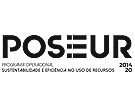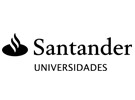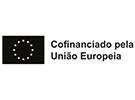



Publication in the Diário da República: Despacho nº 10366/2022 - 24/08/2022 (Parceria ESTT/ESAI) + Despacho n.º 3227/2025, de 12/03/2025
6 ECTS; 2º Ano, Anual, 56,0 TP , Cód. 908953.
Lecturer
- Maria Manuela Morgado Fernandes Oliveira (1)(2)
(1) Docente Responsável
(2) Docente que lecciona
Prerequisites
Not applicable
Objectives
(a) Provide the basic foundations of some of the main statistical techniques, descriptive and inferential, for Data Analysis.
(b) Provide some of the basic concepts of Numerical Methods for the Resolution of Systems of Linear Equations, Numerical Integration, etc.
Program
PART I
1. Exploratory data analysis
1.1. General information
1.2. Fundamental statistical terms and concepts
1.3. Sampling Theory: Random and non-random methods
1.4. Classification of data
1.5. Tabular and graphical representation of univariate data: discrete and continuous
1.6. Measures of location, dispersion and shape
2. Bivariate analysis
2.1. General information
2.2. The dispersion diagram
2.3. Analysis of the degree of association between variables
2.4. Pearson's linear correlation coefficient
2.5. Minimum squares method
2.6. Forecast with the regression line
2.7. Quality of the adjustment (coefficient of determination)
3. Elementary concepts of statistical inference
3.1. Theory of the estimation (punctual and by intervals)
3.1.1. Population mean confidence interval
3.2. Decision theory (hypothesis testing)
3.2.1. Testing the expected value of a population
3.2.2. Probability of significance
3.3. Confidence Intervals versus Hypothesis Testing
PART II
4. Numerical Methods for Systems of Linear Equations
4.1. Indirect or Iterative Methods:
4.1.1. Jacobi iterative method;
4.1.2. Iterative method of Gauss-Seidel.
5. Numerical Methods for Equations and Systems of Nonlinear Equations
5.1. Location of roots;
5.2. Iterative methods:
5.2.1. Method of bisection;
5.2.2. Fixed point method;
5.2.3. Newton's method;
5.2.4. Secant method and False Rope method;
5.3. Newton's method for systems of non-linear equations.
6. Polynomial interpolation
6.1. Lagrange interpolator polynomial;
6.2. Newton's interpolator polynomial;
6.3. Hermite interpolator polynomial.
6.4. Segmented interpolation and inverse interpolation.
7. Derivation and Numerical Integration
7.1. Numerical Derivation;
7.2. Newton-Cotes formulas;
7.3. Simple Trapeze and Simpson rules;
7.4. Compound Trapeze and Simpson formulas;
7.5. Gaussian formulas.
Evaluation Methodology
By frequency:two written tests, scored from 0 to 20, each accounting for 35% of the total grade. Two coursework assignments, each accounting for 15% of the total grade. Students are exempt from the exam if their grade on each test is 6 points or higher and the weighted average is 10 points or higher.
By exam: a written test covering all the material covered. The student passes if the grade obtained is equal to or greater than 10 points.
Bibliography
- Burden, R. e Faires, J. (1993). Numerical Analysis. New York: PWS Publishing Company
- Grilo, L. (2013). Probabilidades e Estatística. Conceitos Teórico-Práticos. (Vol. 1). Tomar, Portugal.: Instituto Politécnico de Tomar
- Murteira, B. (1994). Análise Exploratória de Dados Estatística Descritiva. (Vol. 1). Lisboa - Portugal: McGraw Hill
- Pina, H. (1995). Métodos Numéricos. Lisboa: McGraw-Hill
Teaching Method
Theoretical classes in which will be describe and exemplify the concepts inherent to the contents taught, and theoretical-practical classes in which exercises are proposed to apply the concepts taught.
Software used in class
The Excel spreadsheet and the IBM SPSS statistical package are occasionally used to solve some exercises. We also use: Jamovi, Wolfram Alpha, Symbolab and AtoZMath.

















